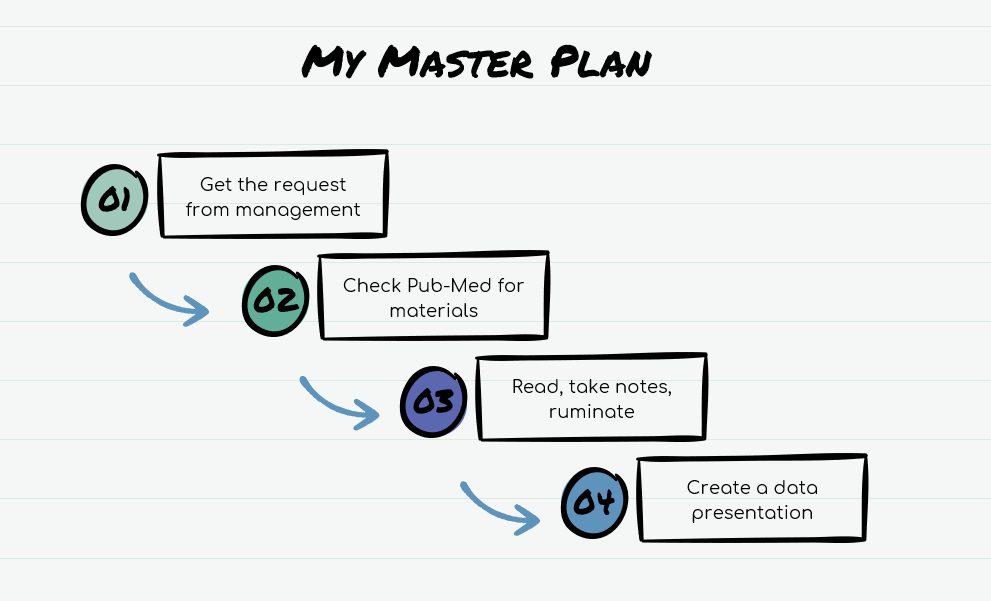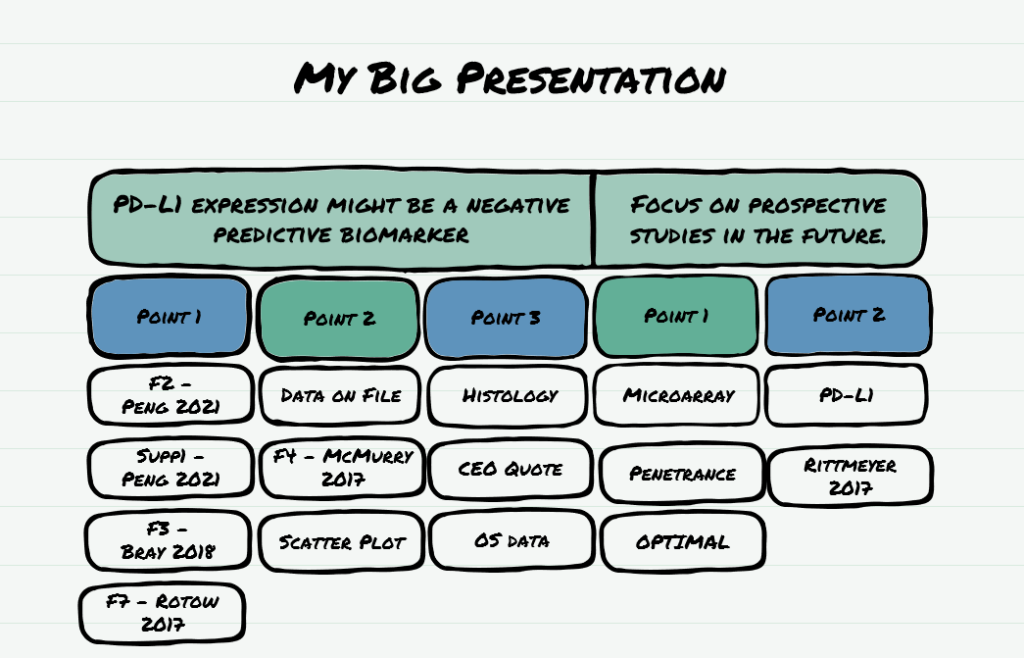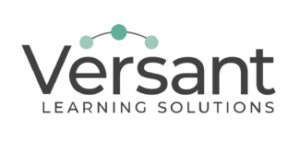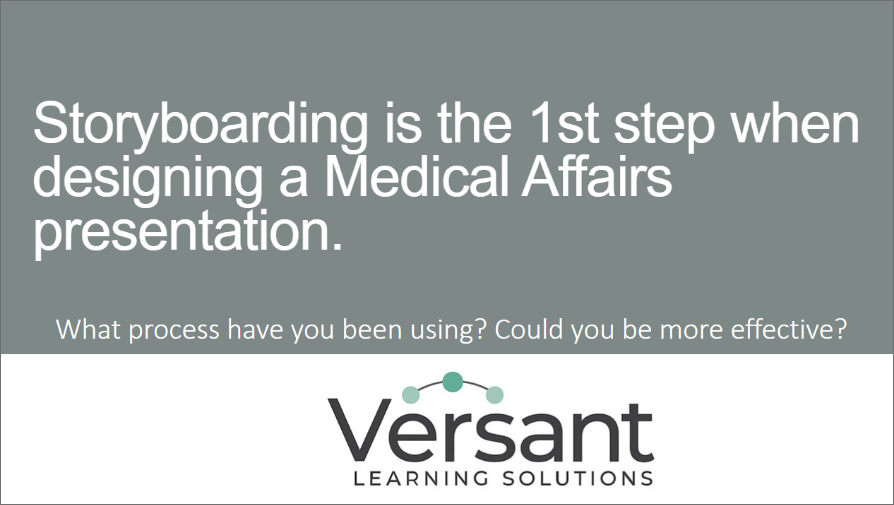How much time do you set aside to plan and storyboard a presentation?
Consider this scenario:
You are the Rockstar MSL of your team!

Management and your team acknowledge that you are a subject matter expert (SME) in your therapeutic area. The team needs a refresher on new data published last year on a topic relevant to your disease state.
However, it’s not a topic that you speak to daily, so when management asks you to develop a training presentation to deliver to the team in an upcoming webinar, you know you’re going to have to do some reading.
What’s your plan for content development?
The last time you created a presentation for your internal team on a medical or scientific topic, how long did it take?
What steps did you use?

Did you use best practice to create a concise and compelling presentation?
Everyone in Medical Affairs is stretched thin. There is no more bandwidth. Many presenters have great intentions but spend little, if any, time in the storyboarding phase of their presentation project.

Why would I storyboard?
If you are like many presenters, you may have immediately opened PowerPoint and begun pulling in slides from other available decks. As you read more on the presentation subject, you may have added additional slides with images from journal articles or white papers and copied and pasted relevant text into the notes.
After that, you may have spent a lot of time shuffling sides around and deciding which slides needed to go in the backup slide section, what data points made sense to use in the presentation, how to edit the text to fit on the slide.
What if there was a better way?
What is a storyboard?
When you hear the phrase storyboard, what comes to mind?
If you’ve seen a storyboard, it may have been in the context of a video or movie set up.
That’s not what we’re talking about in this case. The first step in the process should be to get out some pen and paper or a stack of Post-It notes and map out your plan for the entire presentation.
Some people like to use mind map software for more detailed discussions or a series of presentations, but simple pen and paper is fine.
Whichever modality works best for you is fine.

Include the following elements:
- Include the overall takeaway message, which is also called your elevator pitch. This key message is the one thing you want the audience to remember.
- Key points you want to make during the presentation. These should support the takeaway message. Many data and business presentations include three key points.
- List out the supporting evidence for each key point. The evidence is your referenced data.
What is important is to understand is the overall presentation message and how you’re going to support your assertions and conclusions.

How does storyboarding help?
Spending just a few hours storyboarding at the front end of your project can save you hours in the editing phase.
Extra time before showtime leaves you with the bandwidth to consider scripting out and drafting your talk, practicing your delivery, designing better visuals, and refining the presentation impact.
Proven Value for Medical Affairs
There may be times when your team has no capacity 2 create a data narrative to share with internal and external stakeholders. Your team may be new to Medical Affairs; perhaps they are focused on other initiatives or working in the field to support launch activities. We understand.
However, you need cohesive and tight data stories to share with your audiences and explain your product’s value proposition.
Versant Learning Solutions have created hundreds of compelling slide presentations for Medical Affairs audiences.
Why not partner with a team that has worked in Medical Affairs, trained medical affairs leaders, and supported Medical Affairs operational excellence?
Contact Us to Develop Your Strategy
If you would like to discuss your team’s situation, please contact us.

